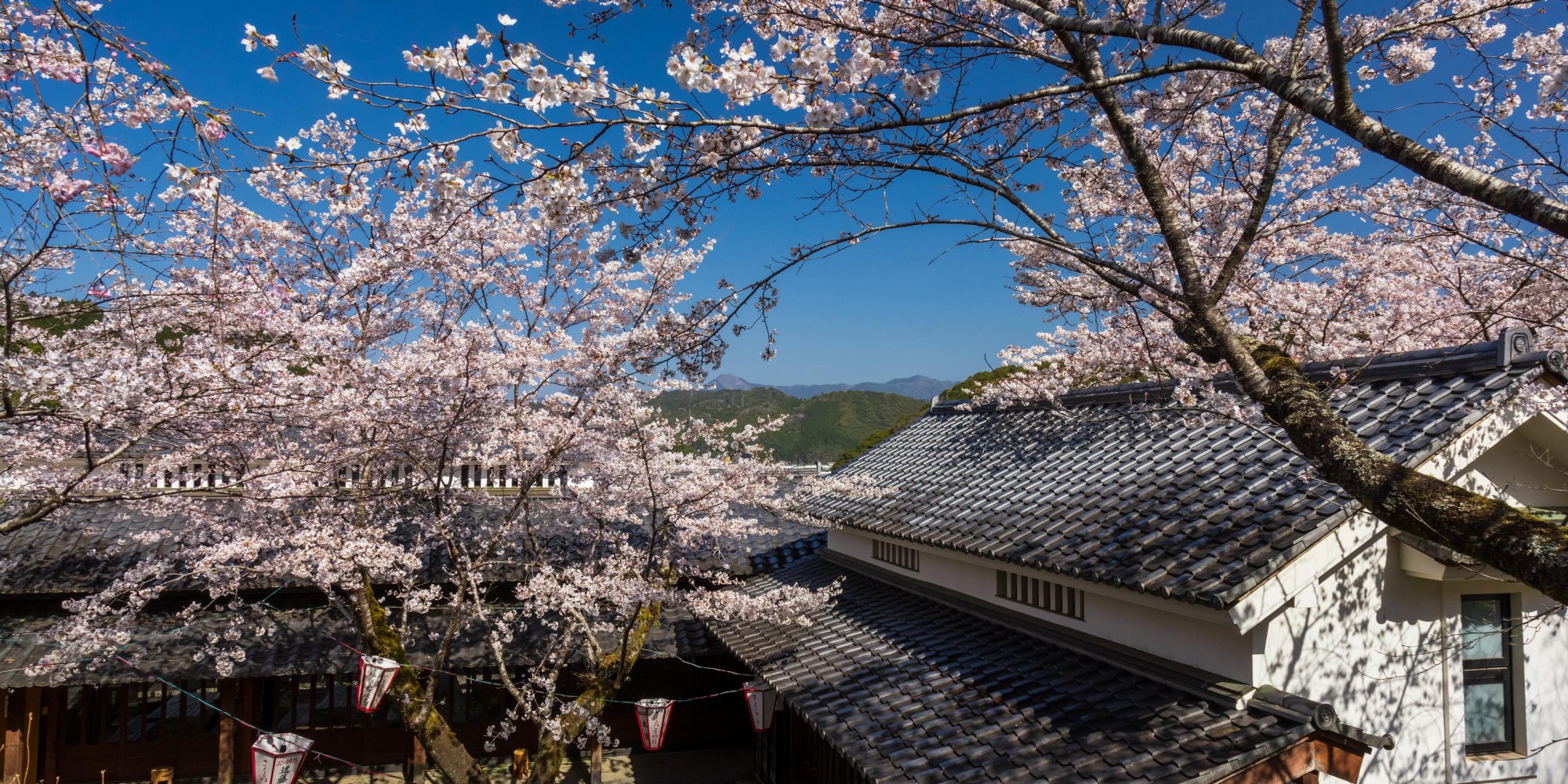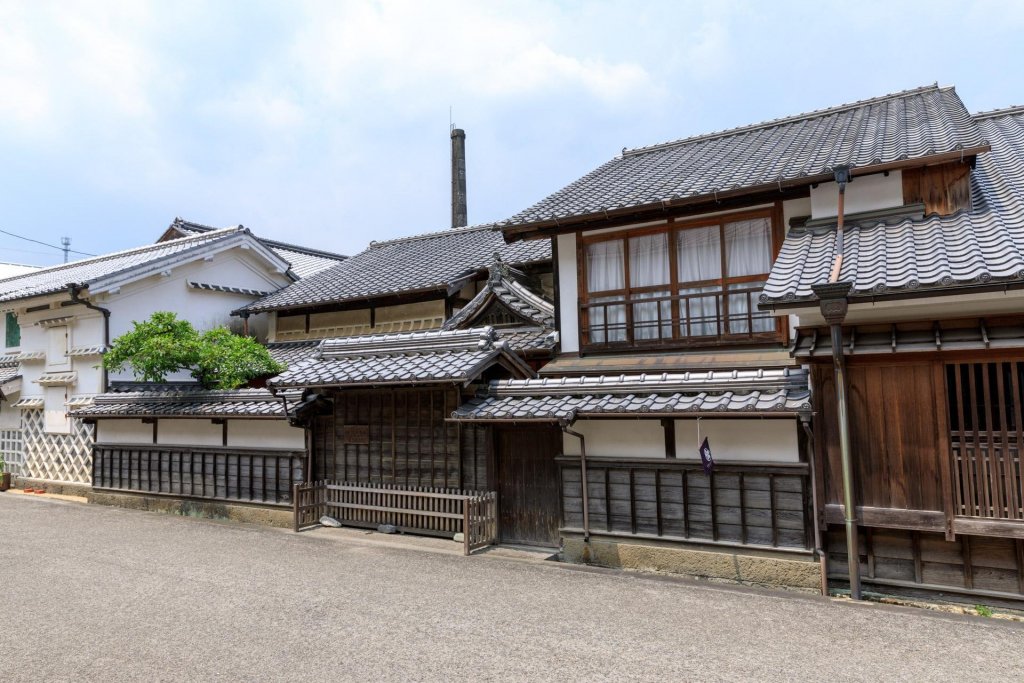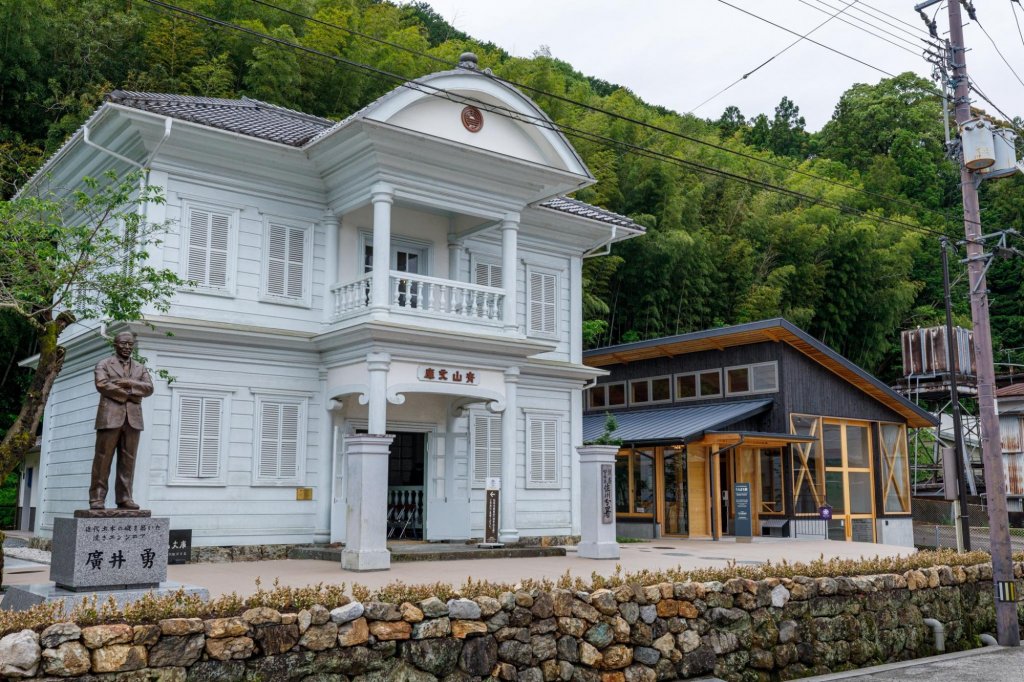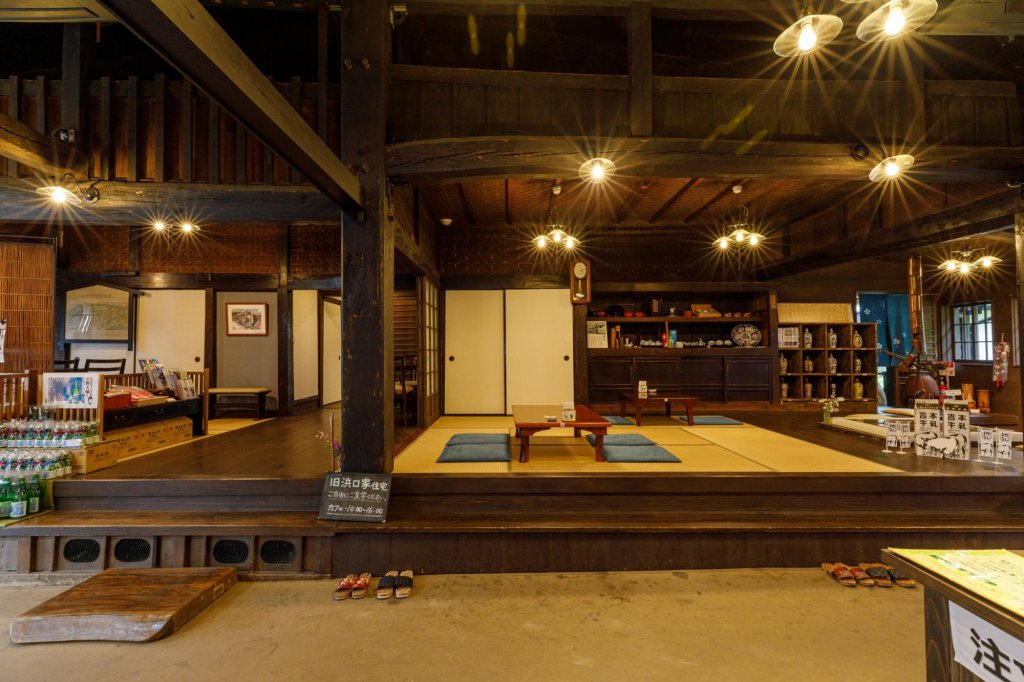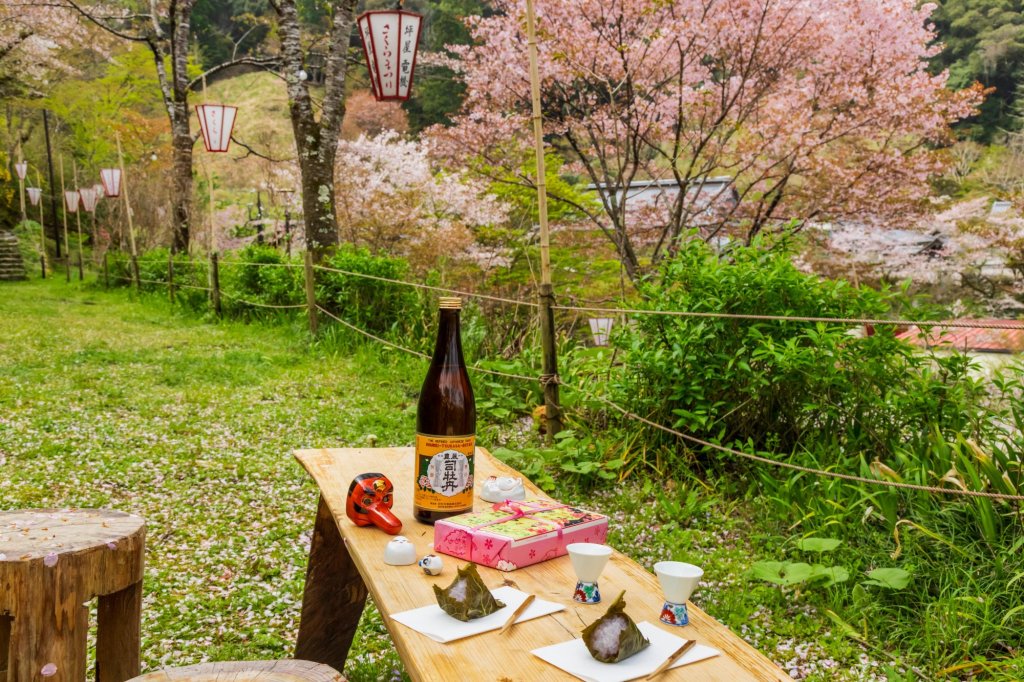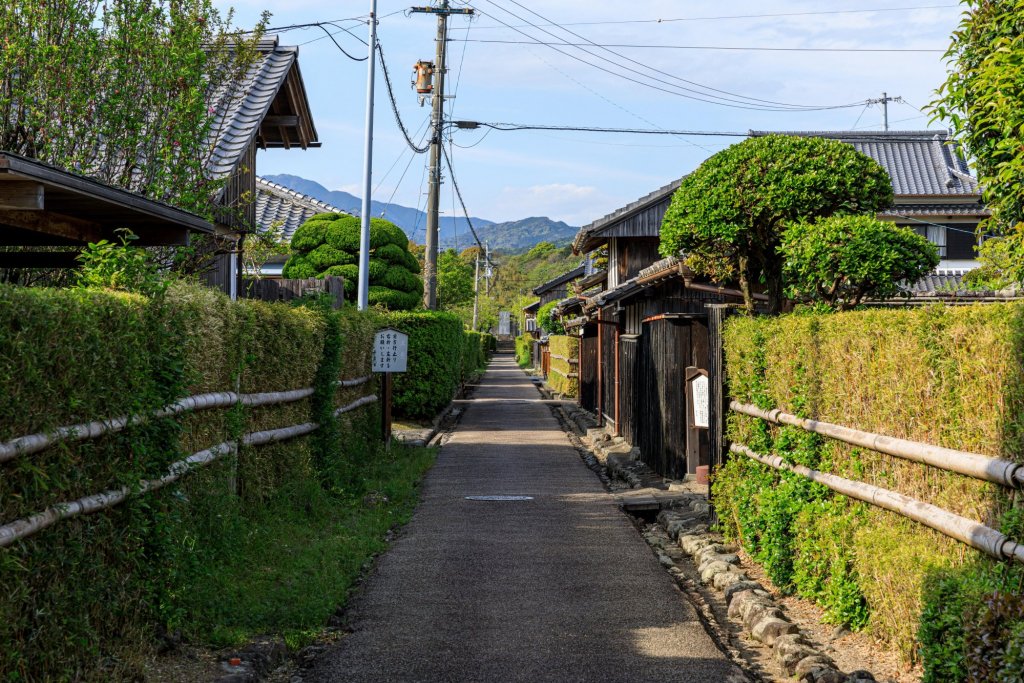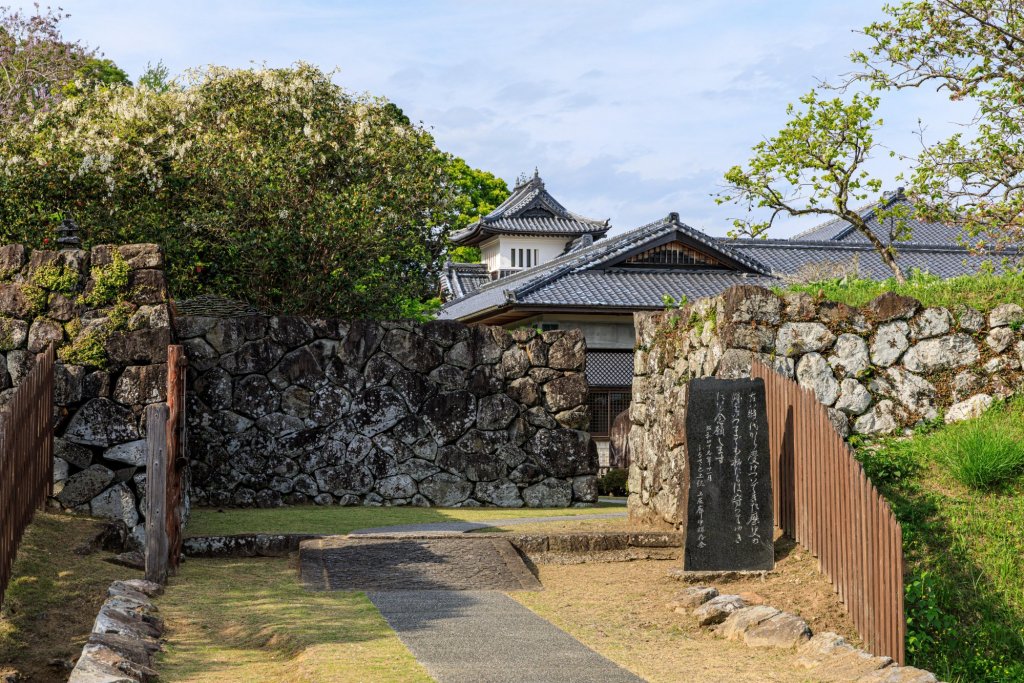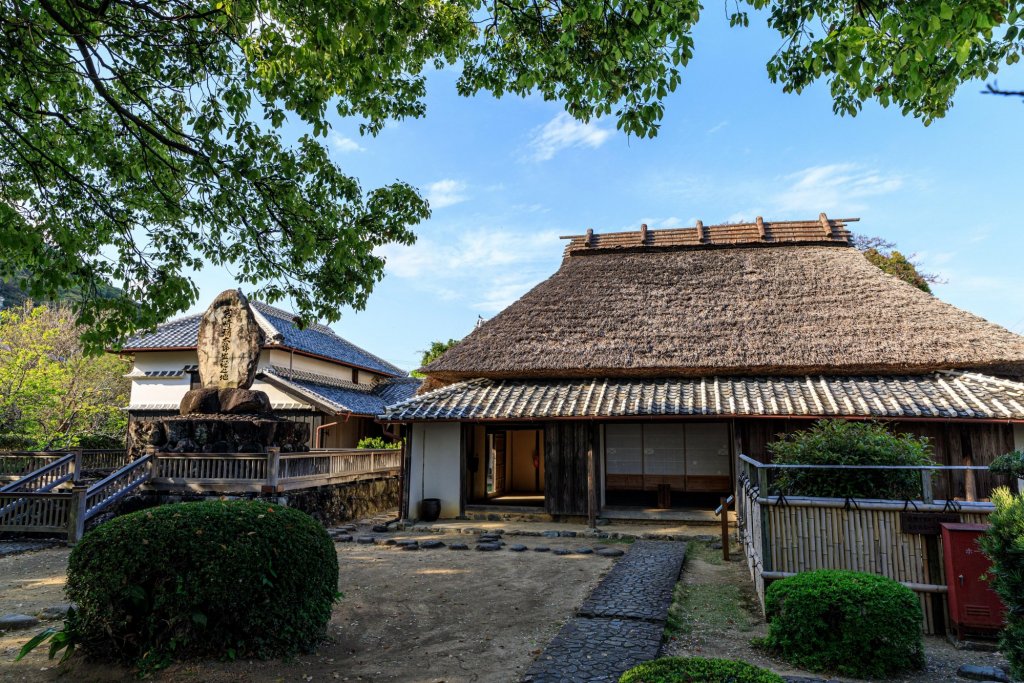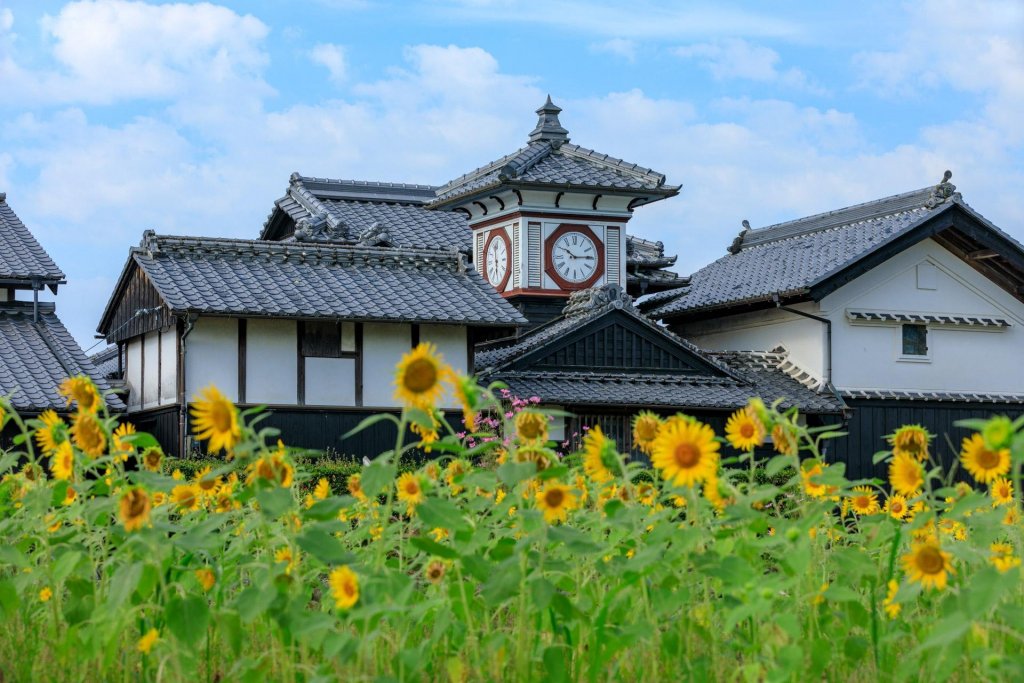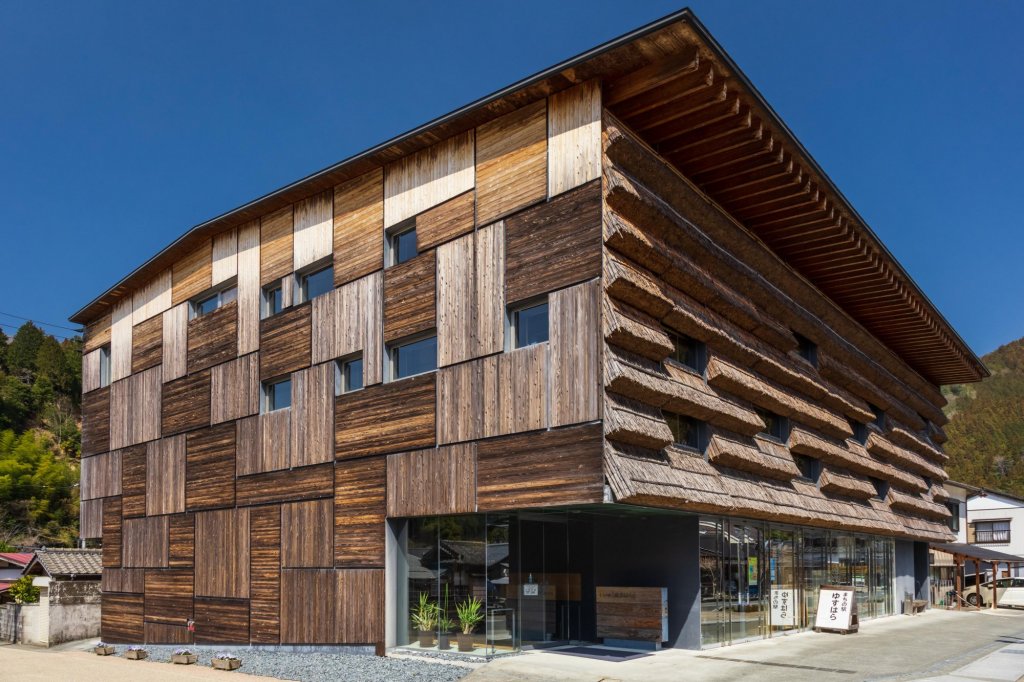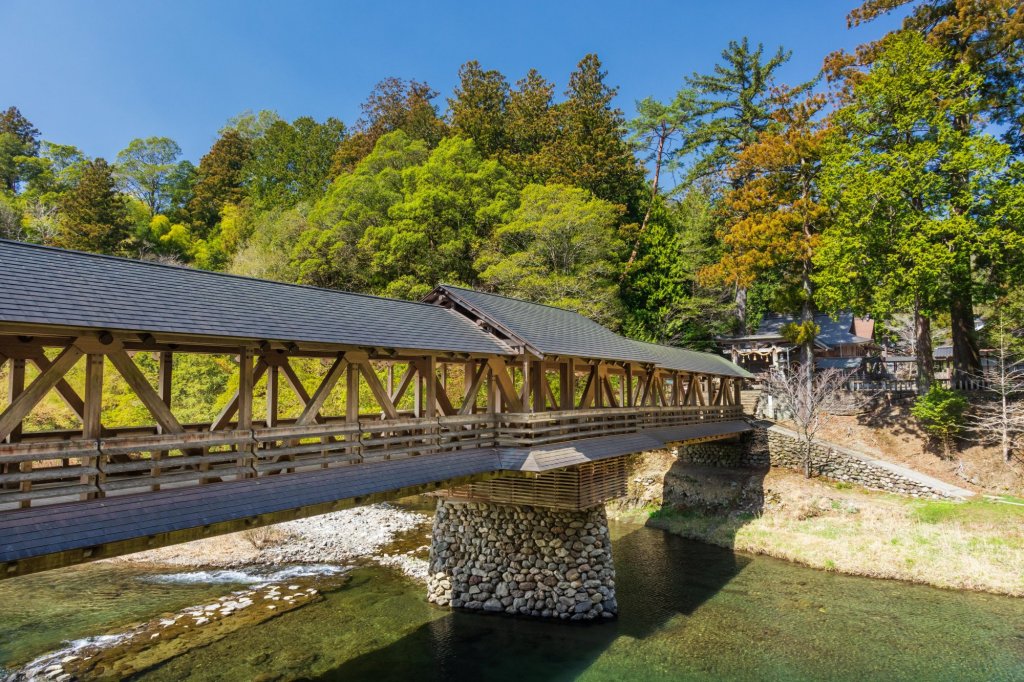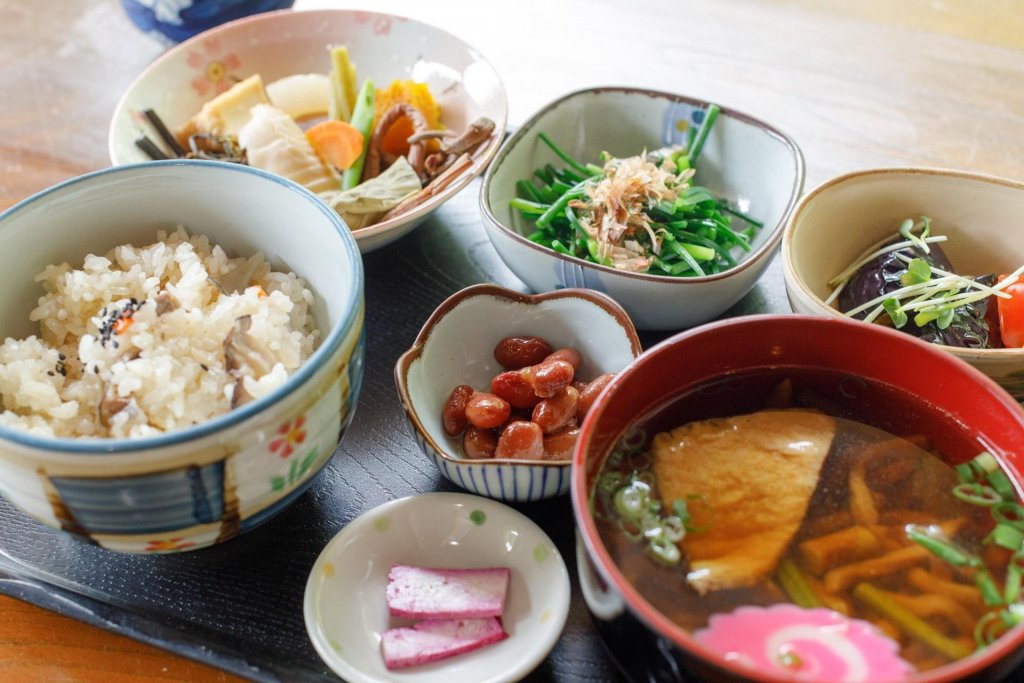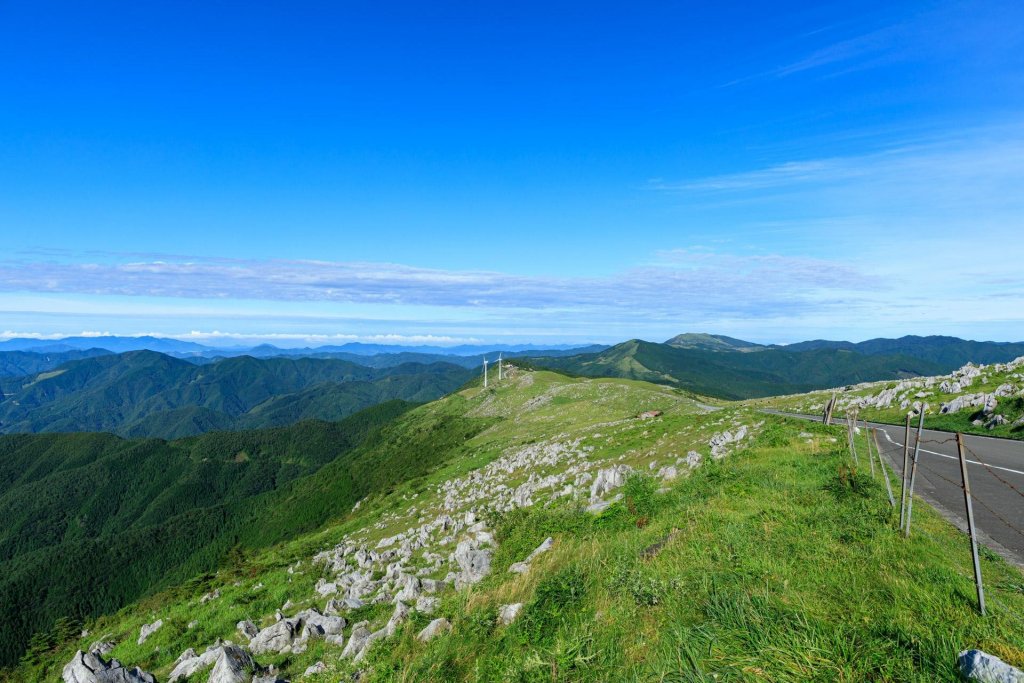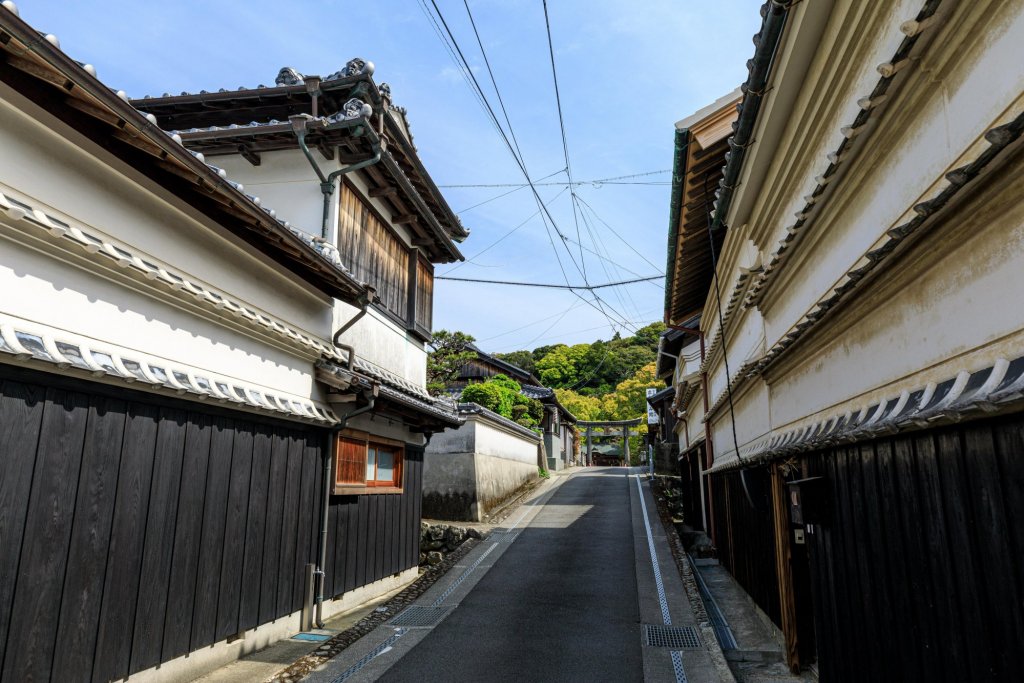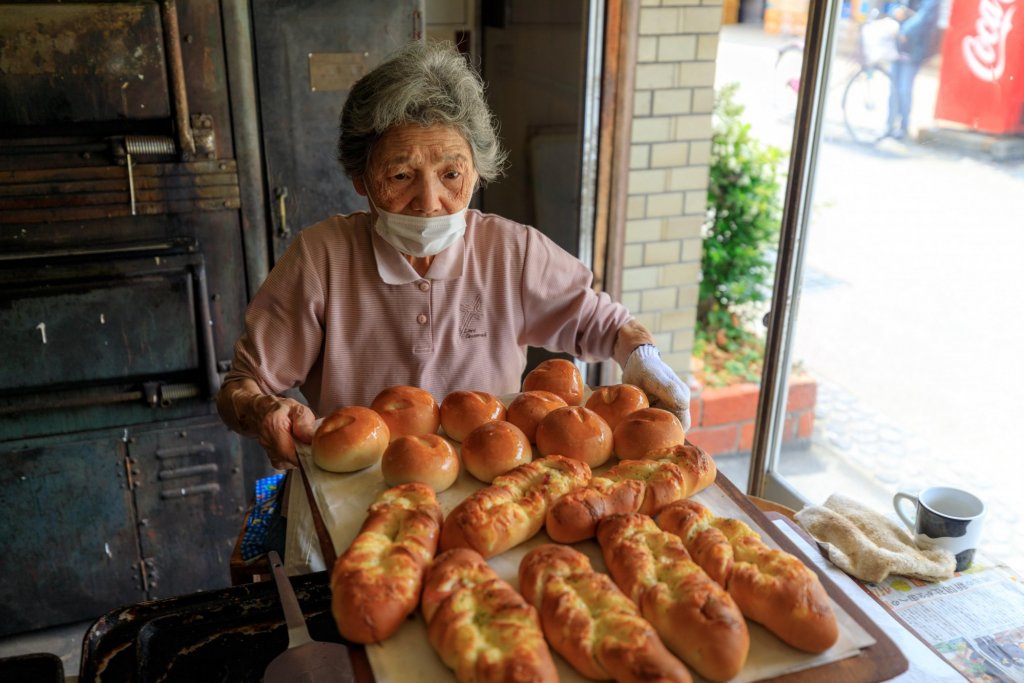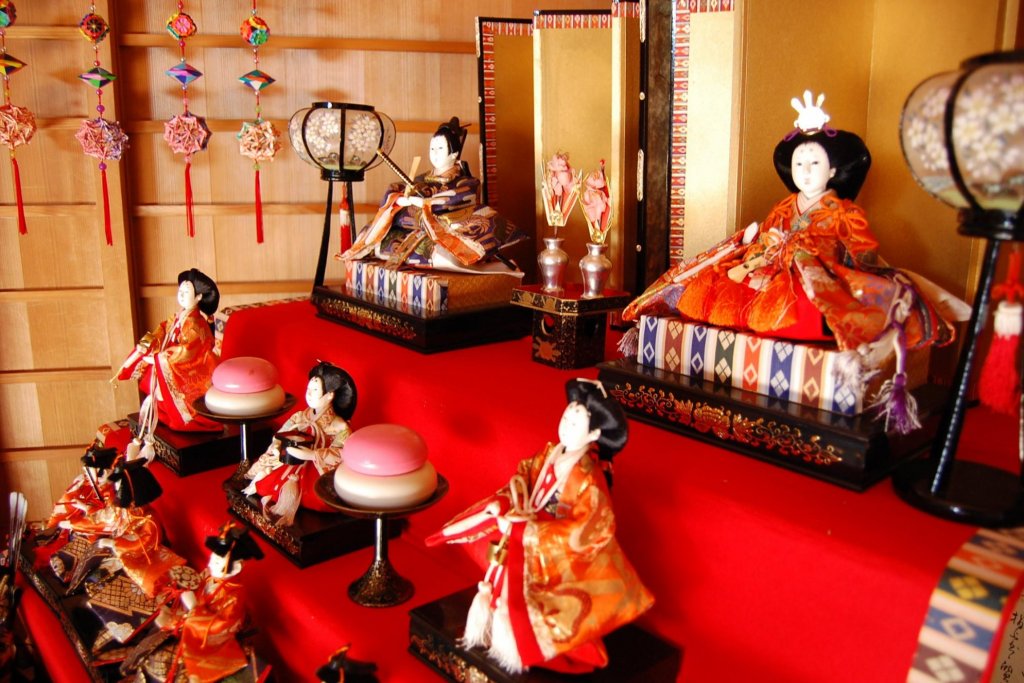Four Historic Towns and Traditional Villages to Visit in Kochi
From charming retro fishing villages to streets lined with rows of elegant traditional Tosa-style buildings, Kochi Prefecture has many little towns where it feels like time has stopped.
Check out a few of our top recommendations, including directions and travel tips!
Check out a few of our top recommendations, including directions and travel tips!
Sakawa: the town of sake and flowers
Sakawa is an easy day trip from Kochi City, located along one of the tributaries of the Niyodo River. This charming little town has many interesting things to see. After stepping off the train, go for a stroll in the oldest part of Sakawa, where there are a number of retro buildings lining the streets, including the over 400-year-old Tsukasabotan sake brewery, a samurai residence and buildings dating back to the Edo and Meiji periods (1600-1912). One unusual highlight is Sakawa Bunko Kosha, a European-inspired wooden building that used to be an (extremely elegant) police station. The Hamaguchi Residence, a former merchant's home, now houses a little cafe' and shop run by the local tourism association where you can have cakes and coffee (and lunch on weekends!) overlooking the peaceful garden, and be sure to stop by Sake Gallery Hotei, where you will find bottles of sake made at the Tsukasabotan brewery, along with local crafts and snacks.
However, there is more to Sakawa than historic buildings. Makino Park, named after important Japanese botanist Dr. Tomitaro Makino (who was born in Sakawa) is positioned on a mountainside overlooking the town. In the spring the whole park turns pink, as 28 varieties of cherry trees bloom from early February to mid-April. Many of the cherry seedlings were donated by Dr. Makino himself, a touching tribute to his hometown. Besides cherry trees, there are dozens of different flowering plants throughout the park, so that there is always something in bloom no matter when you visit. Seigenji Temple, tucked behind the Tsukasabotan brewery, also has a lovely, Zen-like garden, which is considered one of the finest in Kochi Prefecture.
How to get to Sakawa: there are regular trains between Kochi City and Sakawa, so you can just hop on the Dosan Line at Kochi Station. The express train trip only takes 30 minutes, and it is just under one hour on the local train.
However, there is more to Sakawa than historic buildings. Makino Park, named after important Japanese botanist Dr. Tomitaro Makino (who was born in Sakawa) is positioned on a mountainside overlooking the town. In the spring the whole park turns pink, as 28 varieties of cherry trees bloom from early February to mid-April. Many of the cherry seedlings were donated by Dr. Makino himself, a touching tribute to his hometown. Besides cherry trees, there are dozens of different flowering plants throughout the park, so that there is always something in bloom no matter when you visit. Seigenji Temple, tucked behind the Tsukasabotan brewery, also has a lovely, Zen-like garden, which is considered one of the finest in Kochi Prefecture.
How to get to Sakawa: there are regular trains between Kochi City and Sakawa, so you can just hop on the Dosan Line at Kochi Station. The express train trip only takes 30 minutes, and it is just under one hour on the local train.
Aki: samurai homes and eggplants galore
Aki is a historic city on the eastern side of Kochi, a former castle town built around a hill beside the river. While the encolsures and foundations of the castle ruins just hint at what the building must have looked like, the houses of the samurai who served the castle lord still stand. In the Doi Kachu area you can explore lanes lined with traditional houses and attractive bamboo walls. The highest-ranking samurai lived in front of the castle hill, while lower-ranked samurai has homes along the sides of the hill. Some of the houses are open to visitors, so you can get a taste of the samurai's home life!
While the retro neighborhoods of Aki look like they have not changed for centuries, the city was once home to two innovators. The first is Yataro Iwasaki, one of Japan’s most influential industrialists and the founder of Mitsubishi Group. His pretty thatched house is open to the public, and outdoor enthusiasts can literally follow in his footsteps by hiking nearby Mt. Myoken, which Iwasaki regularly climbed to strengthen his body and mind. The other innovator is Genma Hatakenaka, who built the Nora Dokei field clock which has become Aki's most iconic sightseeing spot. Hatakenaka was not trained as a clockmaker, but received an American-made clock which he repeatedly took apart and reassembled until he could recreate the mechanisms. The large, four-faced clock we see today was completed in the 1880s, and housed in a wooden tower perched on an elegant home. A nearby field blooms with sunflowers in the summer.
Be sure to stop by Uchiharano Park, located about 5km away from Aki Station. This park and the large manmade lake were once part of the garden of the Goto family, and are thought to have been established between 1673 to 1680. In April 15,000 azaleas come into bloom, turning the park into a tapestry of pink and red flowers. In early summer ponds full of irises take center stage. There are also cherry and plum trees, along with wisteria to gaze at while you stroll.
When in Aki, be sure to bring your appetite. As one of the Japan's leading eggplant producers, you are sure to find plenty of dishes made with the deep purple vegetable... including ice cream! At the Group Farm shop you can try their popular roasted eggplant-flavored ice cream, along with other local flavors like aonori (green laver), ginger and sake lees. Another tasty specialty is chirimen (whitebait), lightly dried using an iron pot and served on top of a generous bowl of rice. As the tiny fish are caught right off of Aki's coast, they have a fresh, delicate flavor that may even win over inveterate seafood haters!
How to get to Aki: regular trains connect Kochi Station and Aki Station, taking just over an hour and passing by some rather spectacular coastal views on the way.
While the retro neighborhoods of Aki look like they have not changed for centuries, the city was once home to two innovators. The first is Yataro Iwasaki, one of Japan’s most influential industrialists and the founder of Mitsubishi Group. His pretty thatched house is open to the public, and outdoor enthusiasts can literally follow in his footsteps by hiking nearby Mt. Myoken, which Iwasaki regularly climbed to strengthen his body and mind. The other innovator is Genma Hatakenaka, who built the Nora Dokei field clock which has become Aki's most iconic sightseeing spot. Hatakenaka was not trained as a clockmaker, but received an American-made clock which he repeatedly took apart and reassembled until he could recreate the mechanisms. The large, four-faced clock we see today was completed in the 1880s, and housed in a wooden tower perched on an elegant home. A nearby field blooms with sunflowers in the summer.
Be sure to stop by Uchiharano Park, located about 5km away from Aki Station. This park and the large manmade lake were once part of the garden of the Goto family, and are thought to have been established between 1673 to 1680. In April 15,000 azaleas come into bloom, turning the park into a tapestry of pink and red flowers. In early summer ponds full of irises take center stage. There are also cherry and plum trees, along with wisteria to gaze at while you stroll.
When in Aki, be sure to bring your appetite. As one of the Japan's leading eggplant producers, you are sure to find plenty of dishes made with the deep purple vegetable... including ice cream! At the Group Farm shop you can try their popular roasted eggplant-flavored ice cream, along with other local flavors like aonori (green laver), ginger and sake lees. Another tasty specialty is chirimen (whitebait), lightly dried using an iron pot and served on top of a generous bowl of rice. As the tiny fish are caught right off of Aki's coast, they have a fresh, delicate flavor that may even win over inveterate seafood haters!
How to get to Aki: regular trains connect Kochi Station and Aki Station, taking just over an hour and passing by some rather spectacular coastal views on the way.
Yusuhara: architectural marvels above the clouds
Hidden away high in the mountains, little Yusuhara was once a logging town and now celebrates the beauty of the local wood in a rather unexpected way. Besides a number of traditional wooden structures and bridges, the town is best known for its buildings designed by famous architect Kengo Kuma. The architect is said to have been inspired by the town’s history (particularly the wooden kabuki theater) and natural surroundings, and his creations around Yusuhara incorporate elements like Japanese cedar, thatch and traditional carpentry techniques. Despite being modern, the buildings still retain a distinctly Japanese feel, and fit in well with the surrounding mountains.
There are currently five Kengo Kuma-designed buildings in Yusuhara. The Kumo-no-Ue-no Gallery, a massive structure created with local cedar, almost seems to float on a thin supporting beam. The enchanting Kumo-no-Ue-no Library or “library above the clouds” is open to the public, so you can see how the books are cocooned within glowing polished cedar surfaces, under a ceiling composed of wooden beams that creates the feeling of sunlight filtering through the trees of a forest. A short walk away is the Yusuhara Town Office, with a playful exterior and a stylized tea hut that represents this important part of local culture. Machi-no-Eki Yusuhara, a community market and hotel that is the only structure that also uses thatch, although Kuma plays with expectations by using this traditional material to cover the outer wall rather than the roof. YURURI Yusuhara, just next to the library, is not open to casual visitors, but you can still admire the Japanese cedar boards on the exterior.
Outdoorsy folks can follow in the footsteps of local hero Sakamoto Ryoma by hiking the Dappan no Michi, the route this former samurai used to escape his native domain. The shortened version of the Yusuhara section starts by the Yusuhara Town Office, and is around a 3-km loop, crossing the elegant roofed wooden bridge at the end of town. Whether you do the full hike or not, be sure to stop at the restaurant Kusabuki, for homey dishes made from local produce. In the center of town, Coffee Flag is a great spot for a cup of coffee and a slice (or two) of cake. And if you really want to feel on top of the world, continue up to the nearby Shikoku Karsts, right on the border with Ehime Prefecture. You can stay in a lodge high on the Tengu Plateau and watch the sunset and clear starry skies from over 1000 meters up.
How to get to Yusuhara: renting a car is the easiest way to reach Yusuhara from Kochi City, which usually takes under two hours. For those taking public transportation, take a train from Kochi Station to Susaki Station (around 40 minutes), and switch to a bus which will take you to Yusuhara in about 1 hour.
There are currently five Kengo Kuma-designed buildings in Yusuhara. The Kumo-no-Ue-no Gallery, a massive structure created with local cedar, almost seems to float on a thin supporting beam. The enchanting Kumo-no-Ue-no Library or “library above the clouds” is open to the public, so you can see how the books are cocooned within glowing polished cedar surfaces, under a ceiling composed of wooden beams that creates the feeling of sunlight filtering through the trees of a forest. A short walk away is the Yusuhara Town Office, with a playful exterior and a stylized tea hut that represents this important part of local culture. Machi-no-Eki Yusuhara, a community market and hotel that is the only structure that also uses thatch, although Kuma plays with expectations by using this traditional material to cover the outer wall rather than the roof. YURURI Yusuhara, just next to the library, is not open to casual visitors, but you can still admire the Japanese cedar boards on the exterior.
Outdoorsy folks can follow in the footsteps of local hero Sakamoto Ryoma by hiking the Dappan no Michi, the route this former samurai used to escape his native domain. The shortened version of the Yusuhara section starts by the Yusuhara Town Office, and is around a 3-km loop, crossing the elegant roofed wooden bridge at the end of town. Whether you do the full hike or not, be sure to stop at the restaurant Kusabuki, for homey dishes made from local produce. In the center of town, Coffee Flag is a great spot for a cup of coffee and a slice (or two) of cake. And if you really want to feel on top of the world, continue up to the nearby Shikoku Karsts, right on the border with Ehime Prefecture. You can stay in a lodge high on the Tengu Plateau and watch the sunset and clear starry skies from over 1000 meters up.
How to get to Yusuhara: renting a car is the easiest way to reach Yusuhara from Kochi City, which usually takes under two hours. For those taking public transportation, take a train from Kochi Station to Susaki Station (around 40 minutes), and switch to a bus which will take you to Yusuhara in about 1 hour.
Kiragawa: whitewashed walls and freshly baked bread
The town of Kiragawa is one of the hidden gems of the Muroto Peninsula. The streets of this retro coastal town are lined with houses dating back to the Meiji (1868-1912) and Taisho (1912-1926) periods, which are built to withstand the typhoons that roll across the region from late summer to autumn. Walls are coated with bright white Tosa plaster, which is waterproof, and further protected by frilly rows of tiles that help keep the rain off. Many of the houses are enclosed behind thick stone walls, a style of architecture unique to this region. Kiragawa is right along the route of the Shikoku 88 Temple Pilgrimage, and is an ideal spot to stop and spend the night at one of the lodgings housed in traditional buildings. The elegant Kurakukan also has a cute cafe' for those who want a short break and a special cup of coffee made with the local binchotan white charcoal.
Another reason to stay overnight is to start your day with fresh bread made at the Home Bakery Tokuya, on sale everyday (except Sundays) from 7:00. For those who need a break from rice and Japanese-style breakfasts, the fluffy loaves and sweet snack breads for sale are sure to hit the spot. Just follow the scent of freshly baked bread to find the shop.
During the Hinamatsuri Doll Festival season in Japan (which takes place on March 3rd), around 80 houses in Kiragawa open their doors to show off elaborate displays of traditional Japanese dolls. If you are passing through in mid-October, don't miss the Jinsai festival, when floats festooned with lanterns and pink "flower" streamers made from washi paper are paraded around town.
How to get to Kiragawa: the town is about 1.5 hours away from central Kochi City by car, or 6km by foot from Kongocho-ji Temple, the 26th temple on the Shikoku 88 Temple Pilgrimage.
Another reason to stay overnight is to start your day with fresh bread made at the Home Bakery Tokuya, on sale everyday (except Sundays) from 7:00. For those who need a break from rice and Japanese-style breakfasts, the fluffy loaves and sweet snack breads for sale are sure to hit the spot. Just follow the scent of freshly baked bread to find the shop.
During the Hinamatsuri Doll Festival season in Japan (which takes place on March 3rd), around 80 houses in Kiragawa open their doors to show off elaborate displays of traditional Japanese dolls. If you are passing through in mid-October, don't miss the Jinsai festival, when floats festooned with lanterns and pink "flower" streamers made from washi paper are paraded around town.
How to get to Kiragawa: the town is about 1.5 hours away from central Kochi City by car, or 6km by foot from Kongocho-ji Temple, the 26th temple on the Shikoku 88 Temple Pilgrimage.
